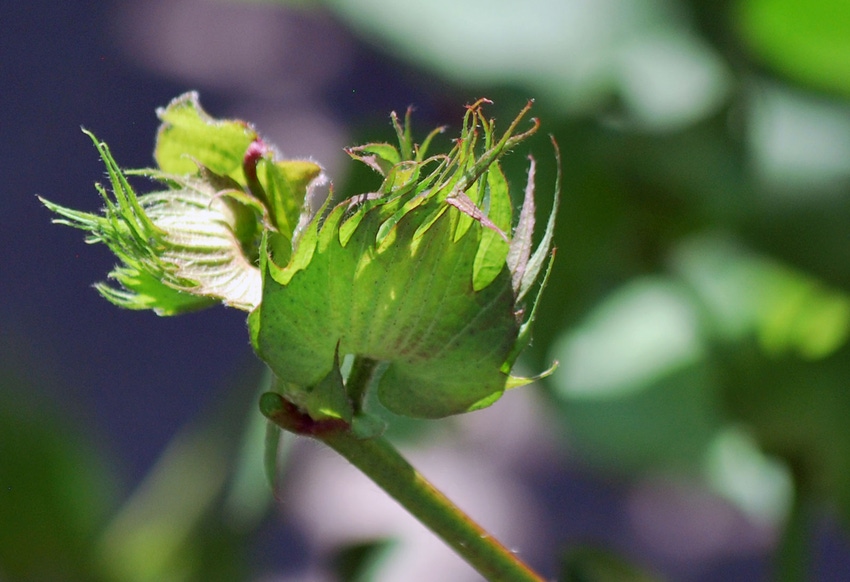February 2, 2021

For the most part in recent years, insects haven't caused Alabama cotton growers too much hardship. Good scouting, wise management decisions and cooperative weather help. It's too early to know what 2021 will bring. Weather between now, planting and harvest will influence that. But now's a good time to get reacquainted with the usual suspects.
In late January, Alabama Extension entomologists Ron Smith and Scott Graham provided Southeast Farm Press with a list of common cotton insects in the order they might appear in cotton fields over the course of a season.
Grasshoppers - The first potential insect that growers in central and south Alabama will encounter will likely be grasshoppers, which have the potential to threaten a stand of seedling cotton. Their numbers are highest in the same fields year after year. For control, apply a low rate of pyrethroid mixed with about 2 oz/A of the long residual Dimilin when applying a burn down herbicide.
Slugs/Snails - Slugs are primarily a problem when cotton is planted into heavy old crop residue, such as corn. Slugs can best be managed at planting by mechanically pushing crop residue several inches away from the seed furrow. Snails have been a growing early season problem for several seasons. No good management or control solution exists. Most of their damage is done by physically bending seedling cotton plants over onto the soil.
Thrips - Some level of thrips always occurs on seedling cotton. The damage depends on the growth rate of seedlings, which is determined by planting date, rainfall and temperature, especially nighttime temperature. A thrips predictor model (https://climate.ncsu.edu/cottonTIP) developed at NC State is helpful in predicting where foliar sprays may be needed to supplement at-plant in-furrow or seed treatments.
Aphids - Aphids are often a greater problem on late planted cotton. It is advisable to allow aphids to crash from a naturally occurring fungus, unless cotton is under significant stress, such as with moisture/temperature.
Tarnished or Clouded Plant Bugs - Adult plant bugs enter cotton fields as wild host plants stop blooming or dry down in the spring. Their numbers or damage can be quantified with sweep nets or pinhead square monitoring in pre-bloom cotton. After flowering begins, it is best to quantify immature plant bugs, which hatch from eggs deposited by adults about three weeks earlier, by shaking plants over a drop cloth. Plant bugs usually reach higher numbers pre-bloom in early planted fields. Good thresholds are established for managing plant bug infestations.
Bollworms - Bollworms can escape in damaging levels on Bollgard II varieties like DP 1646 B2XF, but not those that have the third Bt gene. Damaging numbers of escape bollworms have not occurred in widespread fields in several years. If or when they may occur, pyrethroids applied for stink bug control will minimize their numbers. Bollworm populations peak from mid to late season at the same time stink bug controls are necessary.
Stink Bugs - Stink bugs are the most damaging insect in cotton over much of Alabama. Good thresholds have been established based on the percent of bolls with internal injury and the week of bloom. Treatable, damaging levels begin about the third week of bloom and continue for about four weeks. This coincides with the peak boll set window in cotton. Simply observing, looking for stink bugs is often misleading. Their greatest damage will begin within the first 50 or so feet near the field borders. Cotton fields located near other host crops such as corn, peanuts or pecans usually incur the greatest pressure and damage.
Spider Mites - Spider mites are in low levels in many fields throughout the season. Their numbers explode and infections spread during hot, dry periods. Use a seven- to 10-day weather forecast when making treatment decisions. Their numbers and damage do not increase during cloudy or wet periods.
Silver Leaf Whiteflies - Growers who have experienced SLWF problems in the past, especially in 2017, should be on the lookout for low numbers of this pest every season. If low numbers of SLWF (adults or immatures) are observed and cotton is not nearing maturity, controls are advised. This is another dry weather pest. Rainfall will slow the buildup of SLWF. Under dry conditions when this pest is detected, it is much better to treat too early than too late. Yield losses can occur rapidly with SLWF.
About the Author(s)
You May Also Like






